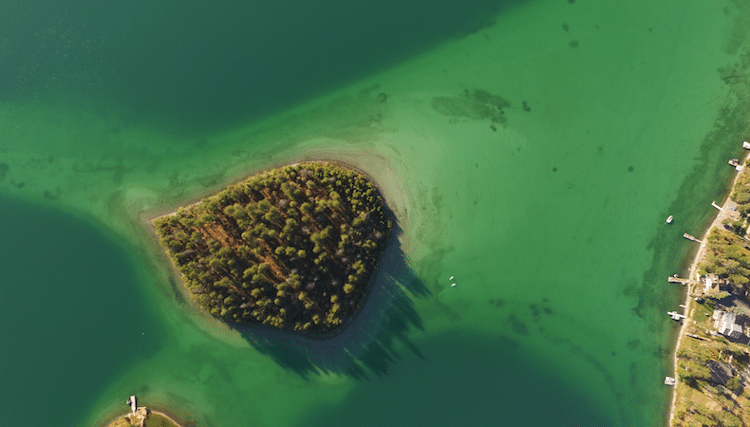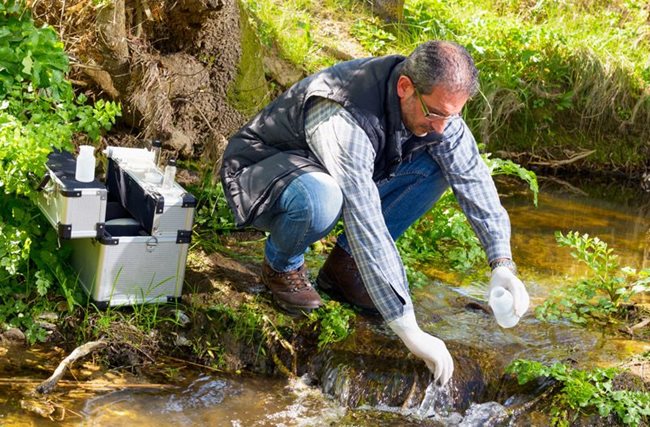How saving water at your business can make a difference

Why do we need to manage global water resources? According to environmental scientist Dr Debbie Chapman, our health and well-being depend on it – and the payback is tremendous.
Here, Dr Chapman explains the importance of managing water resources at the global scale.
Water is one of the basic necessities of our life. We always hear about how much water we should drink daily, but we don’t hear much about the amount of water we are wasting, water scarcity, or how we can reduce usage.
Here’s a startling figure. Only 1 % of the world’s freshwater is easily accessible. To make matters worse, it is not evenly distributed around the globe and is vulnerable to contamination from human activities. Even more disturbing, the long-standing concept that freshwater is a renewable resource is now compromised by the ongoing deterioration in water quality, leading to the degradation of aquatic ecosystems on which human health, livelihoods and development depend.
Freshwater scarcity and quality deterioration rank among the most urgent environmental challenges of this century. According to UN Water, a United Nations inter-agency coordination mechanism for all freshwater and sanitation issues, Earth is facing a 40 % shortfall in water supply by 2030, unless we dramatically improve its management.
UN Environment and its Global Environment Monitoring System for Water (GEMS/Water), through its partners and work programme, play an important role in helping developing countries meet the United Nations Sustainable Development Goal for Water (SDG 6). GEMS/Water’s primary objective is to encourage monitoring and to ensure compatibility and comparability of water quality data for use in national, regional and global assessments.
ISOfocus recently had the opportunity to talk to environmental scientist Dr Debbie Chapman, who has been associated with GEMS/Water for over 30 years and is well known the world over for her role in promoting water quality monitoring and assessment.
Dr Chapman established, and is the Director of, the UN Environment GEMS/Water Capacity Development Centre at University College Cork in Ireland, which provides expert advice and training in water quality monitoring and assessment worldwide.
In this ISOfocus interview, Dr Chapman depicts the greatest global water challenges the world faces today and explains the practical ways ISO standards can contribute to ensuring resources are used sustainably.
ISOfocus: What do you think are the greatest global water challenges?
Dr Debbie Chapman: As an environmental scientist, I am interested in ensuring that the aquatic environment can deliver, now and into the future, the services on which human populations depend while still maintaining the aquatic ecosystem itself.
Some of the services we rely on include drinking water, wastewater assimilation, fisheries for food, water and nutrients for agriculture, and recreation. Many of these services are dependent on a healthy aquatic ecosystem, something that is frequently overlooked.

All living organisms, including ourselves, require water as a basic component of our cells and tissues. Not only do we require sufficient water to keep these cells and tissues hydrated, but it is essential that the water is not contaminated with substances that may be toxic, such as metals, or the thousands of other organic and inorganic chemicals that find their way into the aquatic environment.
Contamination of water, even at low levels, can have subtle effects on aquatic organisms, resulting in changes to species and population densities, that ultimately mean the natural ecosystem becomes unbalanced and unhealthy. And an unhealthy ecosystem does not support the services we need.
So, in my opinion, the greatest global water challenge is ensuring that the limited quantity of freshwater we have on earth is of good quality, i.e. a quality that not only provides for the needs of a growing human population, but also for the needs of the aquatic ecosystems.
Ensuring a sufficient quantity of water will not support a sustainable future unless that water is also of adequate quality. Monitoring of water quality is essential to determine whether the quality meets the requirements for specific uses, or whether it is deteriorating or improving.
Water resources cannot be managed appropriately without the information produced from water quality monitoring programmes. The UN Environment GEMS/Water Programme has been encouraging water quality monitoring for over four decades with the aim of sharing the data for assessments, management and policy development.
This activity now has new impetus with the introduction of the Sustainable Development Goal indicator for ambient water quality, SDG indicator 6.3.2. The indicator is based on the results of monitoring in rivers, lakes and groundwaters in each country.
How can ISO standards help overcome these challenges?
Water quality monitoring depends on using technical methods and well-run laboratories. Sharing water quality data across regions, and at the global level, requires the data to be comparable. One way of ensuring that water quality data from many laboratories in different countries are comparable is to encourage the laboratories that share data to use standardized methods that have been well tried and tested.
The methods conveyed in ISO standards are reputable and recognized globally, and provide a mechanism for ensuring data from different countries are comparable. There is a wide range of water quality monitoring standards, from field techniques to laboratory testing, so every aspect of the monitoring programme can be standardized and compared, even for monitoring at the global scale.
In what ways can ISO’s recent efforts in the sanitation sector bring added value?
Inadequately managed sanitation is a major contributor worldwide to the deterioration in water quality. Providing guidance and standards for efficient management of sanitation systems will ensure that pollution of aquatic ecosystems with wastewater is reduced, and the water quality of waters receiving effluent will be improved.
If you could look into the future, how are we doing in 2030 in terms of reaching the SDG 6 target for sustainable water management? What more needs to be done?
Unfortunately, 2030 will be here too soon! Although we see evidence of enthusiasm for engaging with the new Sustainable Development Goal for water worldwide, many countries are starting from a low base with respect to management of pollution sources and monitoring of the impact of those sources on water quality.
There is increasing awareness of the need to preserve water quality, especially for the protection of human health; the crux of the problem is to convince policy makers and resource managers of the importance of monitoring the quality of water bodies and aquatic ecosystems.
For countries which currently have very little monitoring activity or no national-scale monitoring programme, it will be difficult to establish a programme and collect sufficient data to guide strategies for improving water quality by 2030. Education, training and awareness raising at all levels, from community to policy makers, will play an important role in driving progress towards achieving SDG 6, and indicator 6.3.2.
Topics
Interested in joining our community?
Enquire today about joining your local FESPA Association or FESPA Direct
Recent news

Key trends and market shifts on Personalisation and Sportswear with Epson
Debbie McKeegan speaks to Duncan Ferguson, VP of Commercial and Industrial Printing at Epson Europe about the market shifts and current trends around personalisation. Duncan shares the key trend of merging both fashion and sportswear.

Sustainable substrates for vehicle wrapping
As demand for environmentally friendly applications continues to increase, Rob Fletcher takes a closer look at some of the more sustainable materials available to companies working in the vehicle wrapping sector.

